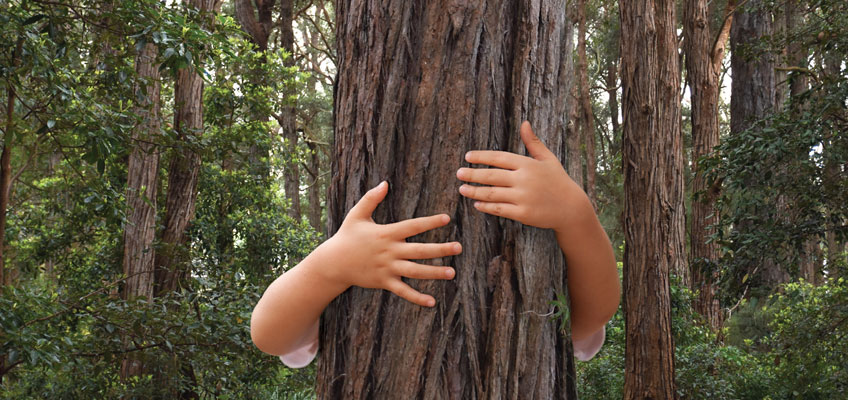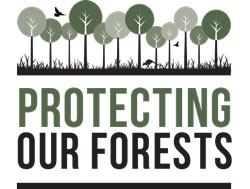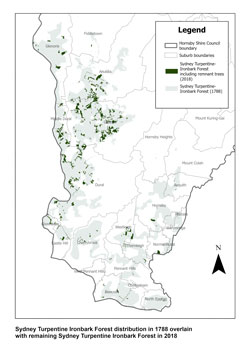Sydney Turpentine-Ironbark Forest
HELP US PROTECT OUR FORESTS
The unique Sydney Turpentine-Ironbark Forest of Hornsby Shire is critically endangered

Facts
Does it grow in my suburb or rural area?
Sydney Turpentine-Ironbark Forest grows in 23 suburbs and rural areas within Hornsby Shire, in and amongst the places where over 118,000 people live. If you live in or near these suburbs or rural areas, then Sydney Turpentine-Ironbark Forest is your neighbour: Arcadia, Asquith, Beecroft, Canoelands, Castle Hill, Cheltenham, Cherrybrook, Dural, Fiddletown, Forest Glen, Galston, Glenhaven, Glenorie, Hornsby, Maroota, Middle Dural, Normanhurst, North Epping, Pennant Hills, Thornleigh, Wahroonga, Waitara, Westleigh.
What does it look like?
Sydney Turpentine-Ironbark Forest is a type of bushland with tall, straight trees. It gets its name from the dominant Turpentine (Syncarpia glomulifera) and Grey Ironbark (Eucalyptus paniculata) trees. In a healthy Sydney Turpentine-Ironbark Forest, you will see other plants of various shapes and sizes, including trees such as the Grey Gum (Eucalyptus punctata).
Why does it only grow in the southern and western parts of Hornsby Shire?
Sydney Turpentine-Ironbark Forest has specific soil and rainfall requirements which, when added together, limit where it can grow. The trees and plants that make up Sydney Turpentine-Ironbark Forest need more fertile soils than the sandstone-derived soils found in Sydney’s large national parks. Fertile soils contain clay and hold moisture and nutrients, producing strong, tall trees. Such soils form from weathered shale rock and so Sydney Turpentine-Ironbark Forest is found growing on shale/sandstone boundaries where shale-influenced soils dominate, on the higher altitude edges of the Cumberland Plain1, and on the shale ridge caps of sandstone plateaus. It grows in areas with rainfall of 800 mm to 1,100 mm per annum. Where Hornsby Shire’s suburbs and rural areas have this soil and rainfall combination, and where it hasn’t been cleared, you will find Sydney Turpentine-Ironbark Forest.
1 The Cumberland Plain is the lower lying areas of the Sydney metropolitan area, between the Sydney Central Business District and the Blue Mountains
Sydney Turpentine-Ironbark Forest is not simply a group of unique and striking trees. It is an ecological community, with a unique and diverse combination of many different plants and other living things. From below the ground to the tops of the tallest trees, everything living in or visiting an ecological community contributes to its health.
A healthy ecological community is vital for the survival of every living thing that depends on it. Ecological communities nourish our soils, shelter and sustain wildlife, protect our waterways and absorb carbon dioxide while emitting oxygen. Ecological communities are created by nature over thousands of years, so once an ecological community is gone, it cannot be replaced.
You will not find Sydney Turpentine-Ironbark Forest anywhere else in the world except within the Sydney metropolitan area.
When an outpost of the British Empire settled in Sydney some 240 years ago, Sydney Turpentine-Ironbark Forest quickly became sought after for its straight, tall trees and moist, relatively rich soils. The forest was progressively cleared for timber and agriculture, starting in the inner west of Sydney. Removal of the forest accelerated following the expansion of Sydney’s suburbs in the nineteenth and early twentieth centuries. With increasingly dense urban and rural development, Sydney Turpentine-Ironbark Forest was almost squeezed out of existence. Today, only 0.5% of its original area remains in small and scattered patches. With just over 1,000 hectares now left on the entire planet, and under immense pressure, Sydney Turpentine-Ironbark Forest is facing an extremely high risk of extinction.
Sydney Turpentine-Ironbark Forest is listed by the NSW Government and the Australian Government as a critically endangered ecological community. Once it is gone, it cannot be replaced!
Hornsby Shire contains 323 hectares of Sydney Turpentine-Ironbark Forest. This is 27% of all the Sydney Turpentine-Ironbark Forest that exists in the entire world! This means Hornsby Shire and its people are key to its survival.
The small amount of Sydney Turpentine-Ironbark Forest remaining is subject to pressures that threaten its health and survival. Sustainably looked after for tens of thousands of years by traditional custodians, everything changed for Sydney Turpentine-Ironbark Forest when Europeans arrived in Hornsby Shire. Beginning in the late 1700s, trees were felled for timber followed by wide-spread clearing of the forest for farming. With the construction of railway lines and road expansion, suburbs replaced the once-rural areas. As Sydney's population grew, land-use development continued a-pace and the forest was almost squeezed out of existence. You can find out more by reading Hornsby Thematic History.
In 2022, Sydney Turpentine-Ironbark Forest is still under threat from many factors. Left alone and without help, these negative impacts would accumulate, and Sydney Turpentine-Ironbark Forest could quickly decline and become extinct.
Weeds
Exotic plants, including weeds and garden escapees, constantly enter bushland and can take over all layers of a forest. This is especially the case along bushland edges and waterways, and in small or narrow patches of bushland that are surrounded by development. Think again if you don’t believe there are plants that can overpower the robust Turpentine and other canopy trees. Groundcover weeds such as Wandering Trad (Tradescantia fluminensis) can completely block the light reaching the forest floor. No matter how robust the tree, their seeds and seedlings need space and light to germinate and grow. This can’t happen with a thick blanket of weeds covering the ground.
Stormwater
As deep soils are replaced by concrete and bitumen for roads and footpaths, and buildings and facilities for the Shire’s growing population, there is increasingly less space for rain to be slowly absorbed into the ground where it falls. Now when it rains, urban creeks become raging torrents fed by pipes and gutters channelling water that has fallen on these hard surfaces quickly into our natural waterways and bushland. Along the way, this stormwater will carry with it any seeds or plant parts swept up in its path, loose soils, and nutrients such as fertilisers. With creeks flowing higher and faster than is natural, stormwater can reach far into bushland, laying down nutrient-rich sediments. Many bushland weeds thrive in these conditions and their growth can out-compete the native bushland plants. With much bushland located downslope of developed areas, water shedding directly from neighbouring properties can also give weeds the upper hand on the edges of bushland. Council’s Catchment Remediation Program of the last few decades continues to reduce the magnitude of these impacts. Council’s Water Sensitive Hornsby Strategy assesses the Shire’s water sensitive performance and identifies actions to mitigate the impacts of urban stormwater on bushland.
Dumping
Dumping is where natural or manufactured materials are taken into the forest, or moved within the forest, and left there. Natural materials include soil, rock and garden or tree prunings. Manufactured materials found in bushland include concrete and other building materials, discarded items such as furniture, and waste. Building up land or dumping material on top of the forest’s natural ground surface can starve the soil of oxygen and light. Seeds can’t germinate beyond a certain depth, and roots and other living things below the ground need oxygen to survive. The patch of forest affected cannot regenerate and its health declines.
Clearing
Clearing of Sydney Turpentine-Ironbark Forest is not just limited to the cutting down of trees but involves the removal or killing of any of the plants (including shrubs, grasses and groundcovers) which make up this unique ecological community. Unauthorised clearing is a threat to the survival of Sydney Turpentine-Ironbark Forest. It includes private properties encroaching onto public land to create extra space, cutting or poisoning of trees and plants to improve views or access to sunlight or to prevent leaves and branches dropping into properties, track building to access natural areas, and concerns about bush fire. Depending on the extent, some of these activities can be authorised by governments, including local Councils and state and national governments. If not authorised, and because of the critically endangered status of Sydney Turpentine-Ironbark Forest, these clearing activities can be considered illegal.
Clearing of Sydney Turpentine-Ironbark Forest is exacerbated by the digging up of soil by hand tools or machines. Sydney Turpentine-Ironbark Forest contains many living things below the ground surface. Digging up soil damages the future of the forest (in the location it occurs) by removing roots and vital stores of seed and the underground stems, bulbs and tubers of various plants. Digging also damages the roots of trees and other plants that grow alongside the cleared area.
Depending on the extent, some clearing activities can be authorised by governments, including local Councils. The reason why approvals may be granted is to provide places for people to live, work and recreate, or to manage risks to life and property. Any approval process requires rigorous environmental assessments, and options must be considered that reduce or eliminate any impacts on the forest.
Disease
Phytophthora and Myrtle Rust are exotic pathogens that damage bushland ecology and cause the death of plants in certain susceptible areas. These diseases can be spread by people or vehicles moving through bushland and unknowingly picking up pathogens on their shoes, clothes and tyres.
From the tops of the tallest trees right down to the forest floor, Sydney Turpentine-Ironbark Forest supports many different species of wildlife, including those that are now under threat. Hollows in the tall, old trees are nurseries where many birds raise their young. This includes owls such as the rare Powerful Owl, and parrots such as the rare Glossy Black Cockatoo. Native mammals also need these old trees for roosting and feeding, such as rare and tiny microbats who sleep in little tree hollows and small niches. A healthy forest is rich in food for wildlife such as the Sugar Glider who feeds on sap, gum, flowers, fruits and seeds of many forest trees and shrubs. They also eat insects and their honeydew, eggs, lizards, small birds and fungi. Being part of an ecosystem, they help others who live in the forest through pollinating plants such as Banksias and being prey for owls. To support our wildlife, large enough areas of healthy bushland are a must!
What is Council doing in parks and reserves to protect Sydney Turpentine-Ironbark Forest?
Guided by Council’s Biodiversity Conservation Strategy, Council has specialised staff and contractors who work to protect and repair bushland in parks and reserves and in selected unmade road reserves. Bush regeneration contractors restore bushland at around 80 sites across the Shire, including eight (8) Sydney Turpentine-Ironbark Forest sites. Bushcare volunteers work at 65 sites across the Shire, guided by specialist site supervisors employed by Council. Eight (8) of these Bushcare groups work at Sydney Turpentine-Ironbark Forest sites. Volunteers from the Still Creek Landcare Group assist rural private property owners to look after the patches of Sydney Turpentine-Ironbark Forest growing on their land.
Entrusted with looking after a precious forest teetering on the edge of extinction, Council must carefully assess and plan any work and activities that could damage Sydney Turpentine-Ironbark Forest in parks and reserves. With the aim being the forest’s long-term survival, Council conducts and supports plant and animal surveys to measure the forest’s health and to keep an eye on its wildlife and other dependents. A sound understanding of each patch of Sydney Turpentine-Ironbark Forest and its place in the Shire’s wider bushland network is essential. From an environmental impact perspective, the location and design of any proposed tracks and trails, shared pathways, play spaces and stormwater drainage devices (to name just a few) can be guided by survey findings. Options can be considered, and decisions made to ensure protection of critically endangered forests into the future is given the highest priority.
Council warmly invites the community to visit the parks and reserves where Sydney Turpentine-Ironbark Forest grows. To experience its unique and striking beauty and to appreciate and understand the ways of nature, a visit to the forest is a must. Critical to the survival of the forest are human interactions that support its health and ongoing sustainability. As for precious works of art like Leonardo da Vinci’s Mona Lisa or Michelangelo’s David, access to and through Sydney Turpentine-Ironbark Forest must be appropriate and carefully managed.
What can I do to help protect Sydney Turpentine-Ironbark Forest?
- Spend some time in a Sydney Turpentine-Ironbark Forest:
- Take a wander along the mobility-assisted boardwalk through Carrs Bush in Fagan Park, Galston. A delightful discovery experience, you can learn more about the forest and the area’s history through sculptures and interpretive signs. Why not combine it with a picnic in the park!
- Bathe in the greenery beneath the canopy of Turpentine trees as you walk the tracks in and around Reddy Park, Hornsby
- Grab a coffee at nearby shops and head to Cherrybrook’s Appletree Park or Jane Starkey Park in Dawson Ave Thornleigh, where you will also find play spaces for the kids
- Stop and catch your breath while you admire the precious little patch of Sydney Turpentine-Ironbark Forest beside the sealed exercise path around Greenway Park, Cherrybrook.
- Simply enjoy the respite of being in nature
- Take up the offer of free plants from Warada Ngurang Community Nursery, where volunteers and staff propagate the plants, both big and small, that grow in a Sydney Turpentine-Ironbark Forest. Pop them in your garden and you will be helping creatures such as moths, butterflies and native bees that feed on and help pollinate the forest’s plants. You will also be helping wildlife such as the rare Glossy Black Cockatoo, who depends on a handful of trees for its food, including the Forest Oak (Allocasuarina torulosa), a small tree that grows in Sydney Turpentine-Ironbark Forest
- Participate in a guided bushwalk or event. Council’s free Guided Bushwalks Program caters for all, with walks for beginner bushwalkers and those with limited fitness, right through to challenging half-day bushwalks for those with experience and good fitness. Kids bushwalks and nature events are also provided. Not to forget our furry four-legged friends, Council also runs guided bushwalks for well-socialised dogs and their human companions. Look out for the walks that mention Sydney Turpentine-Ironbark Forest.
- Come along to a community planting event. Bring along your friends and family and experience the satisfaction of doing your bit to help the forest. There will be two community planting events held in or near Sydney Turpentine-Ironbark Forest per year, so keep your eye out for them on Council’s Events webpage.
- Remove weeds from your garden, as they can spread from near and far into Sydney Turpentine-Ironbark Forest. With most originating overseas, these weeds often have fewer natural predators here in Australia than do home-grown Sydney Turpentine-Ironbark Forest plants. This means they often out-compete native plants with their vigorous growth and can severely damage the forest’s health. Find out if you have any weeds of bushland growing in your garden, and if so, how to remove them.
- Keep your pets under control and never let them wander into any bushland areas, including Wildlife Protection Areas and national parks. Bushland is the home of wildlife. While some native animals, such as the Brush-tailed Possum, are relatively common and are often seen and heard, others are shy and secretive and may be uncommon or rare. Frogs and toads, reptiles, birds and mammals can be irresistible to cats and dogs. This is a very good reason to always walk your dog on a lead in Council’s parks and reserves (except for off-leash dog parks) and why cats should be prevented from entering bushland.
- Join a Bushcare group. Becoming a Bushcare volunteer is an enjoyable way to learn about Sydney Turpentine-Ironbark Forest with like-minded people. There are 8 Sydney Turpentine-Ironbark Forest Bushcare groups working once a month, each guided by a specialist site supervisor employed by Council. Volunteers learn about the forest and its wildlife simply by being there and lending a hand. They help the forest by removing weeds, protecting and creating habitat for wildlife, and planting where needed to supplement natural regeneration. There are groups who work in Sydney Turpentine-Ironbark Forest on a weekday and others that work on a Saturday or Sunday. Some groups work in the morning while others work in the afternoon, and there is sure to be a time and location to suit.
- Expand your knowledge about Sydney Turpentine-Ironbark Forest and how you can help to reduce threats. You can do this by visiting the links within these webpages.
- Report to Council any activities you suspect might be damaging Sydney Turpentine-Ironbark Forest.
- Have your say on plans and policies that may affect the management of Sydney Turpentine-Ironbark Forest, including plans of management, major projects, landscape concept plans, and masterplans for parks and reserves. Find out about Council’s current and upcoming infrastructure and works projects, including any located in or near Sydney Turpentine-Ironbark Forest.
What can you do?
- Spend some time in a Sydney Turpentine-Ironbark Forest
- Plant some of the forest’s native species
- Participate in a guided bushwalk or event
- Come along to a community planting event
- Remove weeds of bushland from your garden
- Keep your pets under control and never let them wander into bushland
- Join a Bushcare group









